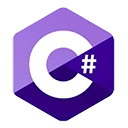C# is a powerful programming language that can be used for scientific and mathematical computing. With its rich set of libraries and support for complex data structures, C# is a versatile choice for various scientific applications. In this guide, you'll explore how to leverage C# for scientific and mathematical computing with sample code and explanations.
Using the Math Library
C# includes a built-in `Math` class that provides a wide range of mathematical functions and constants. You can use this class to perform basic and advanced mathematical operations.
Example of Using Math Library:
using System;
class Program
{
static void Main()
{
double number = 3.5;
double squareRoot = Math.Sqrt(number);
double sineValue = Math.Sin(Math.PI / 4);
Console.WriteLine($"Square root of {number}: {squareRoot}");
Console.WriteLine($"Sine of π/4: {sineValue}");
}
}
Working with Arrays and Matrices
C# supports arrays and collections, making it suitable for handling data in scientific computing. You can use arrays to store and manipulate large datasets or matrices for mathematical operations.
Example of Working with Arrays and Matrices:
using System;
class Program
{
static void Main()
{
// Create an array of numbers
double[] numbers = { 1.0, 2.0, 3.0, 4.0, 5.0 };
// Calculate the sum of numbers
double sum = 0.0;
foreach (var number in numbers)
{
sum += number;
}
Console.WriteLine("Sum of numbers: " + sum);
// Create a 2D matrix
double[,] matrix = new double[3, 3] {
{ 1.0, 2.0, 3.0 },
{ 4.0, 5.0, 6.0 },
{ 7.0, 8.0, 9.0 }
};
// Find the determinant of the matrix
double determinant = CalculateDeterminant(matrix);
Console.WriteLine("Determinant of the matrix: " + determinant);
}
static double CalculateDeterminant(double[,] matrix)
{
// Implement a method to calculate the determinant of a matrix
// (You can use techniques like Gaussian elimination)
// For simplicity, we'll use a placeholder value here
return 0.0;
}
}
Using External Libraries
C# allows you to incorporate external libraries and packages for specialized scientific computing tasks. Libraries like Math.NET Numerics, Accord.NET, and ILNumerics provide extensive support for numerical and scientific computations.
Example of Using Math.NET Numerics:
using System;
using MathNet.Numerics;
class Program
{
static void Main()
{
double[] vectorA = { 1.0, 2.0, 3.0 };
double[] vectorB = { 4.0, 5.0, 6.0 };
var result = vectorA.DotProduct(vectorB);
Console.WriteLine("Dot product of vectors A and B: " + result);
}
}
Plotting Data
For data visualization, you can use libraries like OxyPlot or external tools like Matplotlib via IronPython. These libraries allow you to create charts and graphs to visualize your scientific data.
Conclusion
C# is a capable language for scientific and mathematical computing, thanks to its extensive libraries, data structures, and external library support. You've explored the basics of using the `Math` class, working with arrays and matrices, and incorporating external libraries. As you continue your journey in scientific computing, you'll delve into more advanced topics like data analysis, statistics, and numerical simulations.
Practice using C# for scientific computing to become proficient in solving complex mathematical problems and conducting scientific experiments.

